Below is a brief article about the top 10 theaters on the Strand, London. The Strand is in the city of Westminster in Central London.
Adelphi Theatre
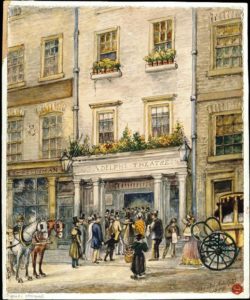
The Adelphi Theatre is located in the West End of London. It was founded in the year 1806. At the time, it was known as the ‘Sans Pareil’. The founders were the merchant John Scott and his daughter Jane Scott who was a theatrical performer, manager and also a playwright. The ownership was transferred to Adelphi Buildings which was a large construction right before the theatre on the same road.
The theatre was a platform for melodramatic plays by the Adelphi Screamers in the 1820s. Many stories by Charles Dickens have been enacted on this stage. ‘A Christmas Carol’ and ‘The Haunted Man and the Ghost’s Bargain’ are some significant plays played on the stage.
In the year 1858, due to some architectural conflicts, the theatre was demolished. The new structure could accommodate 1500 people and another 500 on a raised seating. Another renovation took place in 1878.

In 1901, the theatre was expanded to larger ballrooms. This was the third renovation of the theatre. Later in the mid-nineteenth century, a comic transition took place when comedy-drama was also put up on the stage of the theatre.
Since then a number of musicals and dramatic portrayals have taken place in the theatre. It stands with a legacy of performances of English literature.
Theatre Royal, Drury Lane
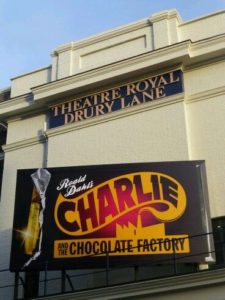
The Theatre Royal is located in Drury Lane and is, therefore, commonly called the ‘Drury Lane’. The Drury lane is one of the four theatres in London that date back to the 17th century and is yet running as a theatre. Drury Lane is still Londons best running theatre.
The theatre was built by Thomas Killigrew, an English dramatist, and a theatre manager during the 1660s. In the beginning, the most prominent actors of the time were hired to perform at the theatre. Charles Hart and Nell Gwyn were among the prominent actors.
The theatre underwent three major renovations. The first one was in 1663 back when it was called the Theatre Royal, Bridges Street. During these times, Charles II – King of England, Ireland, and Scotland was in power. It was under the Kings Company founded in London by Thomas Killigrew. Soon, it came to be known as the ‘Kings Playhouse’ due to his influence on the monopoly within the theatre.
The theatre experienced a shut down in 1665 due to the Great Plague of London. The theatre remained closed for the next 18 months due to the massacre on the command of the crown. After this, it went in for widening and other architectural amendments. Six years later, there was a huge fire due to which it was burned down to the grounds in 1672.
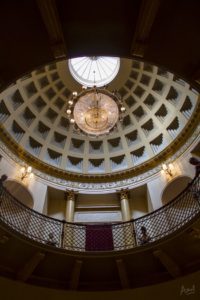
It reopened in 1674. It was then known as the Theatre Royal, Drury Lane. A memorial section was extended in the theatre where the victims of the fire were remembered. The King couldn’t recover the massive losses of the previous structure but built up a new and better architecturally modern theatre. The total expansion of the complex was 13,134 square feet.
There was another expansion of the theatre in 1794 before its complete demolition in 1791. Henry Holland was the newly appointed architect. It stood for 15 years and then a massive fire destroyed the whole of Drury Lane. This fire and the damage caused by it came up to 80000 pounds. The King was in deep trouble and tension due to this.
On the 12th of October, the entirely new construction of the theatre was done. This structure stands until today after its many moderations by the staff of the monarchy.
Aldwych Theatre
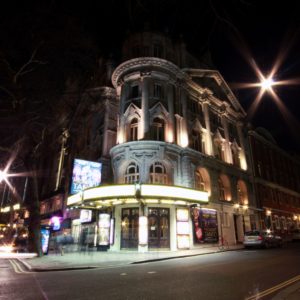
The Aldwych Theatre is located near Strand in the City of Westminster, London. The theatre opened as the Aldwych theatre in 1905. Before this, it was paired with another theatre called the Novello Theatre. It was built in Edwardian Baroque style of architecture.
The new structure was funded by Seymore Hicks, a British actor, playwright, stage manager, performer, and actor-manager along with an American theatrical producer – Charles Frohman.
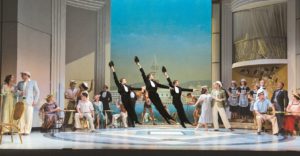
Many of Hicks plays such as The Beauty of Bath and Le Sacre du Printemps, a French play were performed as well as practiced in the Aldwych. The Royal Shakespeare Company, a large British theatre production house set its base at the Aldwych for 3 years.
The theatre can accommodate 1200 people at one time.
Savoy Theatre
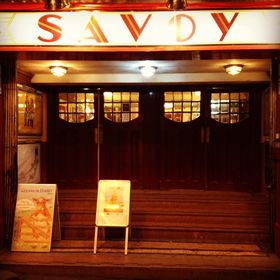
The Savoy Theatre is another West End Theatre located in Strand, London. This theatre opened in 1881 and was built by Richard D’Oyly Carter. Earlier it was a public building and the office to the Richard D’Oyly Opera Company. The site was known as the House of Savoy where the family of the Count of Sabaudia resided.
It was also called the Savoy Palace. Later, it was converted into a hospital which it remained for some years. It is also said that the Palace was converted into a military prison for some time due to its many dungeons and dormitories. It experienced a fire in 1864 and burned down completely.
In 1881, the theatre was opened by Carter. He had made all purchases and initial plannings were all done by the year 1877. The theatre could accommodate nearly 1300 people at one time and had an upper balcony seating as well. It was decorated with expensive interiors and large electric chandeliers that stole the charm of it all.
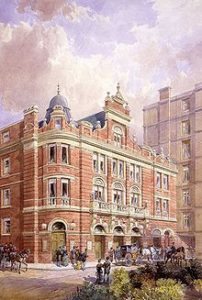
Many plays have been performed here in the late 19th century like the ‘Princess Ida’ in 1884 and ‘The Grand Duke’ in 1896. After the death of Richard in 1901, his son Rupert took over the management of the theatre soon after his father’s death.
Since then, a number of plays have been performed until the fire in 1990. It was reconstructed by the Carter company and still lies under their very management.
Lyceum Theatre
Another massive theatre, the pride of the West End is the Lyceum Theatre in the City of Westminster in London. This structure is as old as the 18th century. It was mainly managed by Samuel James Arnold, an English theatre manager, and dramatist. This was not just a theatre for plays and performances but various forms of entertainment such as exhibitions, circus, etc.
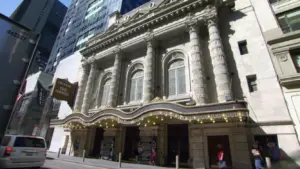
After the administration of James Arnold, the ownership of the theatre fell into the hands of the management of the Royal Academy. In 1802, the theatre became the first site of an exhibition of waxworks in London by Madame Tussauds. Later, in the 1830s it was called The Theatre of Lyceum and the English Opera House. In 1834, the theatre was redesigned by Beazley and was allocated a budget of 40000 pounds.
More than 100 performances of Charles Dickens novels have been made at the Lyceum. The musical of the Lion King has been running at the Lyceum since 1999. The theatre has an in-house capacity of 2100 seats.
Dominion Theatre
The Dominion Theatre is another theatre located in London and is one of the prestigious West End Theatres of Strand. The theatre has a capacity of nearly 2163 seats upper and lower floors. There have been many famous production houses that have produced major theatricals in this theatre. It is one of the most popular theatres of Strand, London.
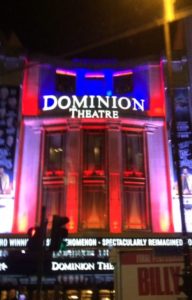
It was built in 1928 and was designed by W & TR Milburn with a budget of 460000 pounds.
From many years, it has been home to the famous show – Britains got talents auditions. The musical ‘We will rock you’ was played at the theatre for 12 years from the year 2002. ‘The Beauty and the Beast’ – theatrical drama was performed here in 1997 – 1999.
The Duchess Theatre
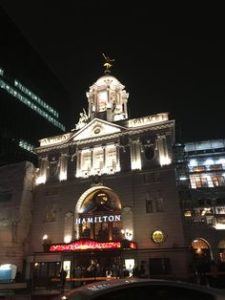
The Duchess Theatre is located in the City of Westminster, London. It is one of the West End theater. It was designed by architect Ewen Barr and was constructed by the FG Minter Group. The theatre was first opened in 1929. The play ‘Tunnel Trench’ was performed.
‘The Herbal Bed’ by Peter Whelan was performed here which was produced by the famous Royal Shakespearan Company.
- Royal Albert Hall: Historic concert hall in London.
- Drama and Theatre in 19th Century: Overview of the evolution of theatre during the 19th century.